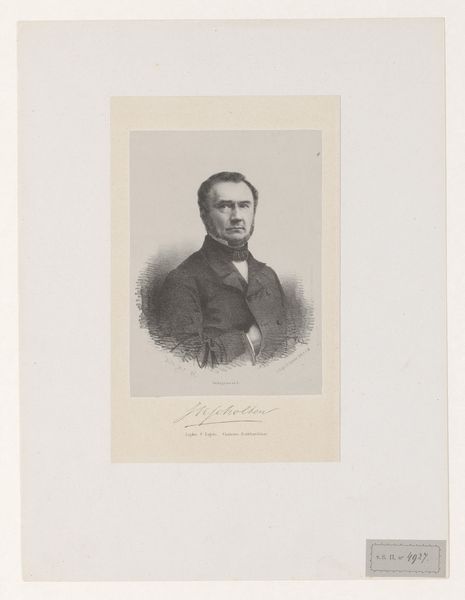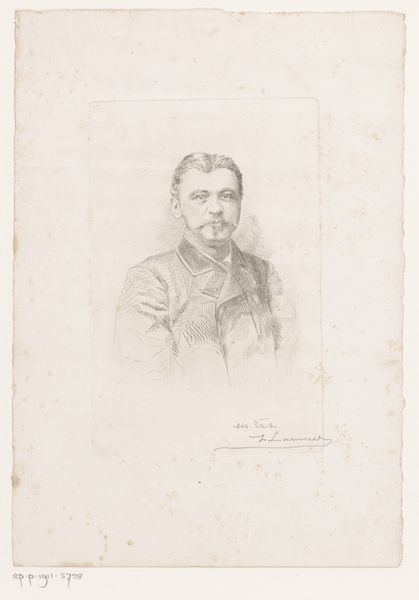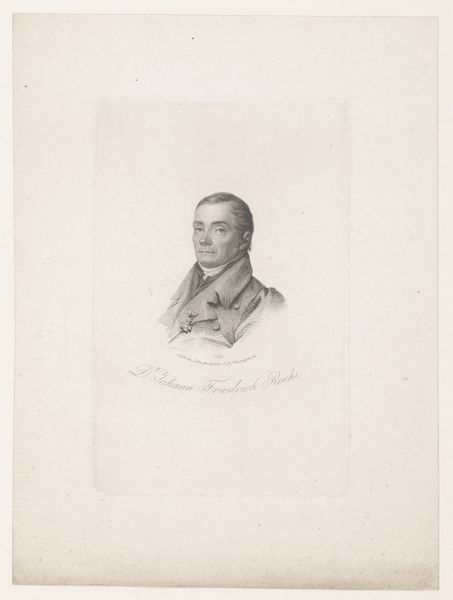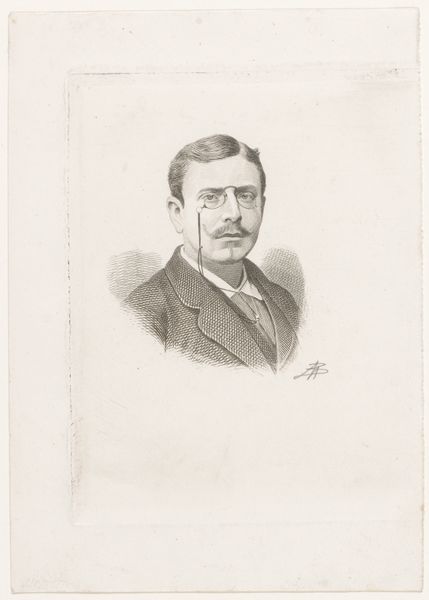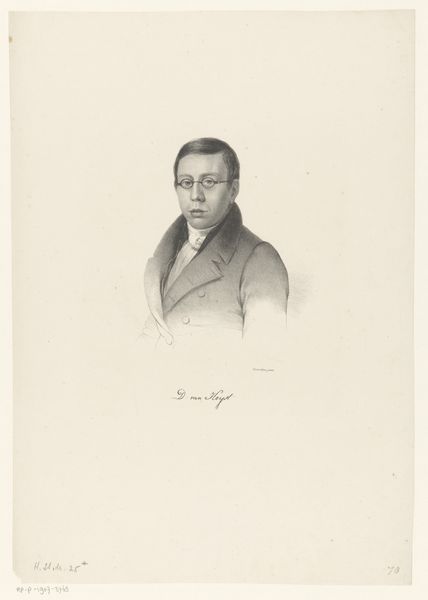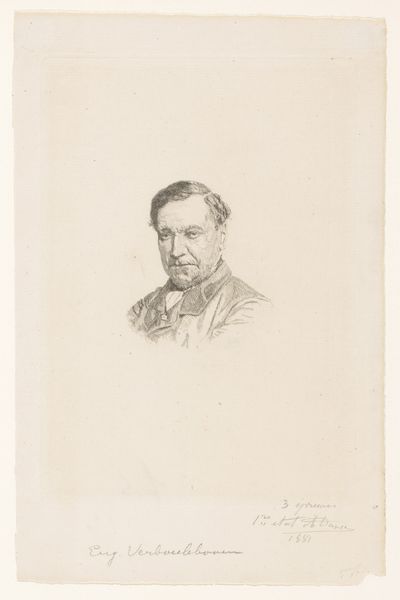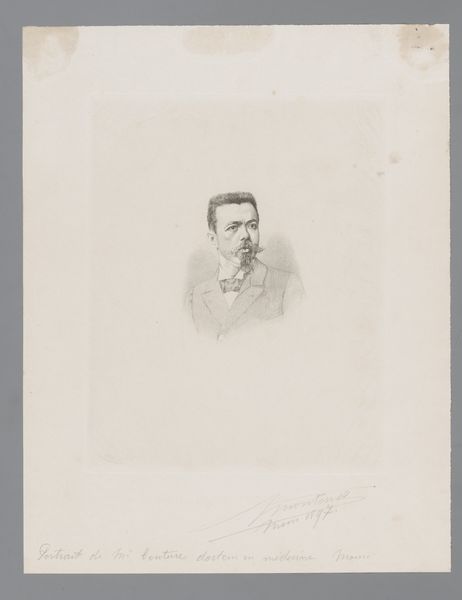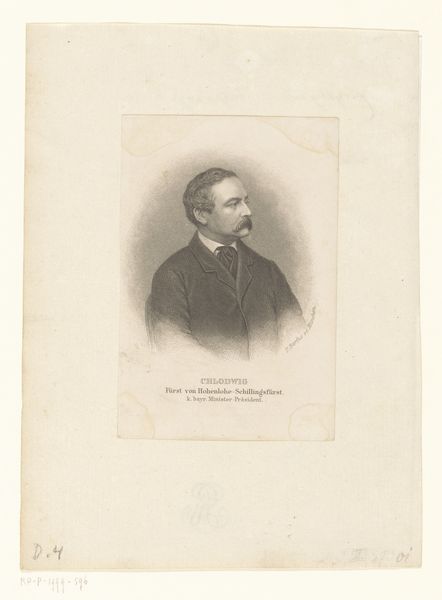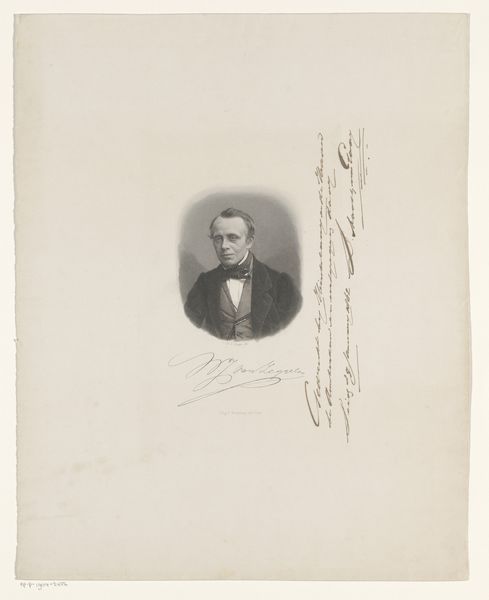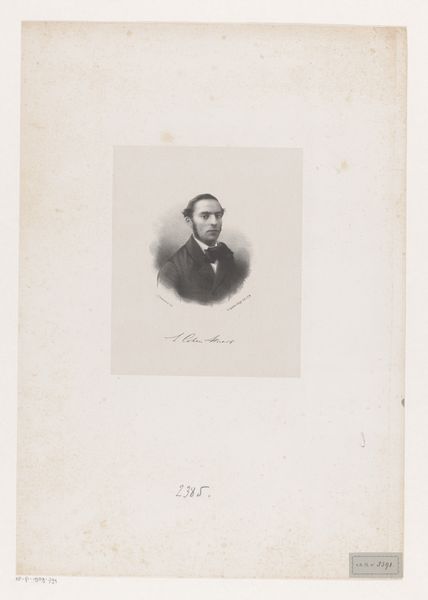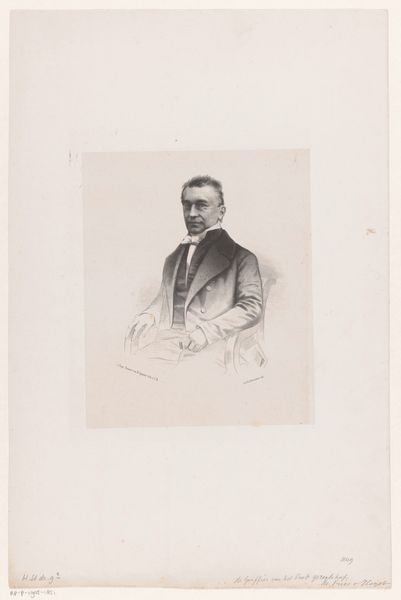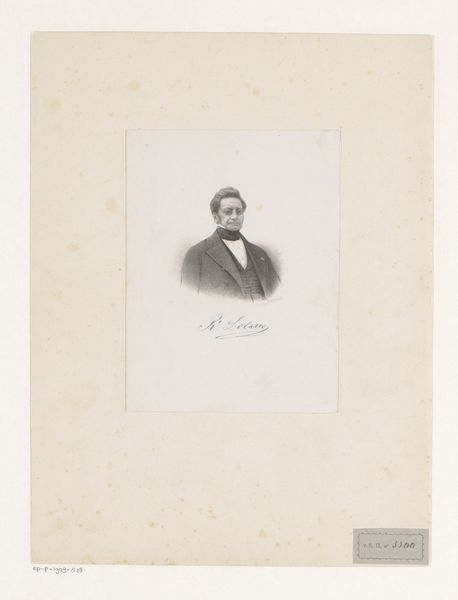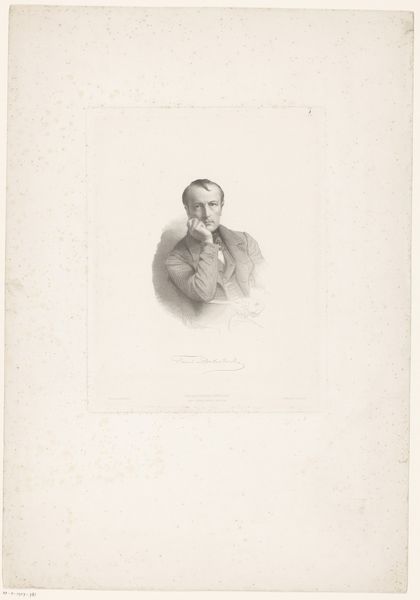
drawing, paper, pencil
#
portrait
#
pencil drawn
#
drawing
#
pencil sketch
#
paper
#
pencil drawing
#
pencil
#
pencil work
#
realism
Dimensions: height 197 mm, width 140 mm
Copyright: Rijks Museum: Open Domain
Auguste Danse made this portrait of Eugène Verboeckhoven sometime in the 19th century. This print exemplifies the 19th-century fascination with portraiture, reflecting broader social and cultural values of the time. Consider the social status of the sitter. Eugène Verboeckhoven was a successful painter of animals. The print medium allowed for wider circulation of his image, reinforcing the status of both sitter and artist. The image creates meaning through visual codes. The meticulous detail and realistic depiction of the sitter's features, the formal attire, the restrained pose, all contribute to a sense of respectability and social standing. This was Belgium, a relatively new nation that was still developing its art institutions. The image could be viewed as self-consciously conservative, reflecting the values of the Belgian bourgeoisie. To understand this artwork better, we might consult sources such as exhibition catalogs, biographies of the artist and sitter, and studies of 19th-century Belgian society and culture. This will help us contextualize the portrait within the broader social and institutional landscape of its time.
Comments
No comments
Be the first to comment and join the conversation on the ultimate creative platform.
